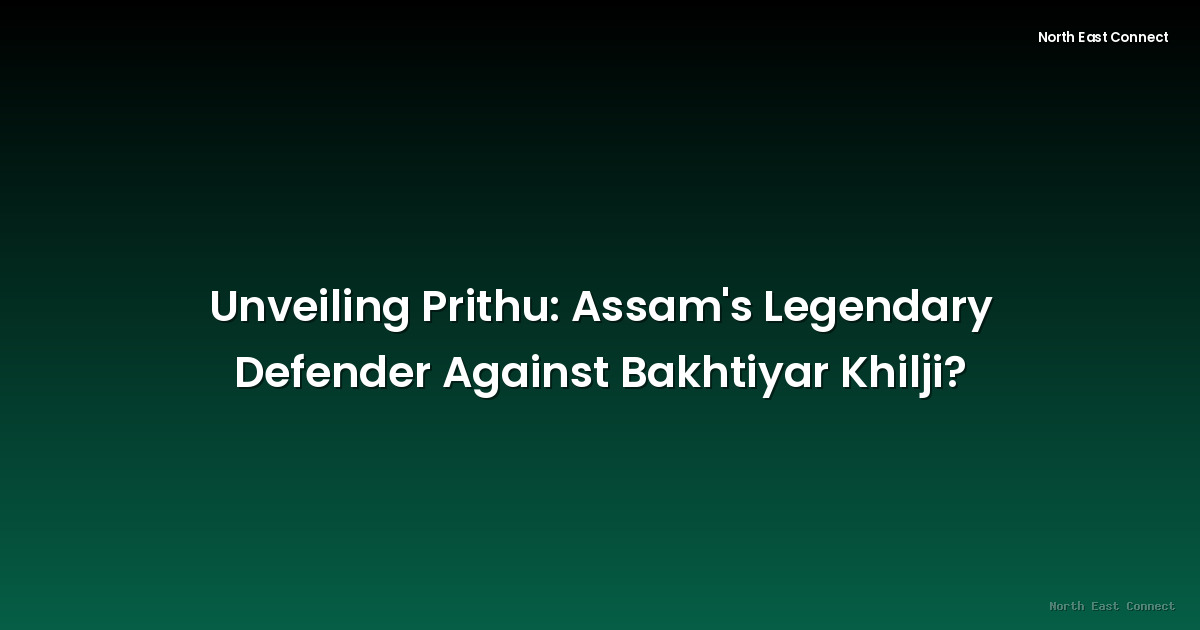2025-08-29 · News
The history of Northeast India is rich with untold stories and unsung heroes. One such enigmatic figure is Prithu, an often-overlooked name in the annals of Assamese history, yet one shrouded in legend. Prithu's story is intertwined with the infamous Bakhtiyar Khilji, the Turkic general responsible for the destruction of the Nalanda University and the conquest of much of Bengal in the 13th century. While historical accounts predominantly focus on Khilji's military achievements, whispers of resistance, and Prithu's alleged role in thwarting Khilji's ambitions in Assam, persist.
The legend surrounding Prithu paints a picture of a valiant leader who successfully defended Assam from Khilji's invading forces. Narratives suggest that while Khilji's campaigns extended into Bengal and Bihar, his attempts to conquer Assam met with fierce resistance, ultimately resulting in a significant setback or even a complete retreat. Prithu is often credited with leading this opposition, thus preventing the devastation that befell other parts of the region.
However, historical evidence supporting Prithu's existence and his supposed victory over Khilji remains scarce. The accounts are primarily found in oral traditions and regional chronicles, making it difficult for historians to verify their accuracy. While conventional historical narratives emphasize Khilji's conquests without mentioning any significant resistance in Assam, the absence of evidence does not necessarily equate to the absence of the event itself. The lack of detailed written records from that period, particularly from Assam, presents a significant challenge in confirming or refuting the legend.
The complexities of verifying the historical accuracy of Prithu's legend highlights the challenges historians face when reconstructing the past, especially concerning marginalized or less-documented regions. The narratives surrounding Prithu demonstrate the rich tapestry of oral histories and traditions that often complement and sometimes contradict official historical accounts.
The enduring presence of Prithu's legend in Assamese folklore, however, speaks volumes about his significance. He remains a symbol of resistance and courage in the face of foreign invasion – a figure that embodies the spirit of defiance and protection of Assam's cultural identity. The story, even if debated historically, serves to remind us of the potential resilience and strength of local communities against external forces throughout history.
Further research is needed to ascertain the historical veracity of Prithu's involvement in repelling Khilji. The potential discovery of additional primary sources, such as inscriptions or previously unknown chronicles, could provide invaluable insights into this fascinating and disputed chapter of Assamese history. Until then, the legend of Prithu continues to resonate, inviting further exploration and debate, reminding us of the hidden depths within regional history and the enduring power of local narratives. Whether a historical figure or a product of folklore, Prithu's legacy remains a compelling and significant part of Assamese cultural heritage. The legend of his defiance against Bakhtiyar Khilji continues to be a source of pride and inspiration for many. The ongoing quest for truth serves to highlight the importance of preserving and critically examining oral histories to provide a fuller picture of our past.







